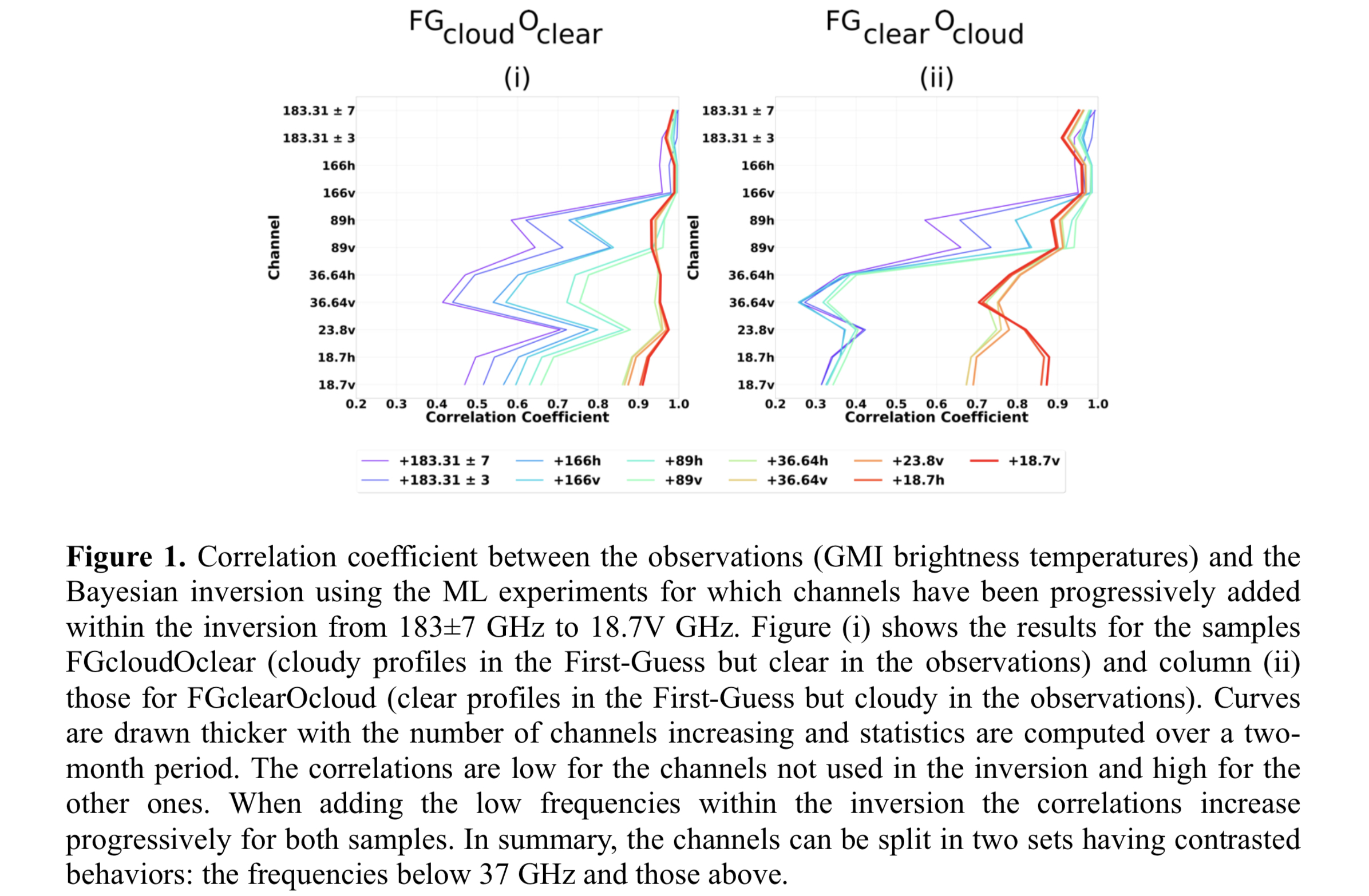Graphical Abstract
Barreyat, M., P. Chambon, J.-F. Mahfouf, G. Faure, and Y. Ikuta, 2021: A 1D Bayesian inversion applied to GPM Microwave Imager observations: Sensitivity studies. J. Meteor. Soc. Japan, 99, 1045-1070.
Special Edition on Global Precipitation Measurement (GPM): 5th Anniversary,
https://doi.org/10.2151/jmsj.2021-050
Graphical Abstract
Published
Plain Language Summary:
The assimilation of cloudy and rainy microwave observations is under investigation at Météo- France with a method called ’1D-Bay+3D/4D-Var’. This method consists of two steps: (i) a Bayesian inversion of microwave observations and (ii) the assimilation of the retrieved relative humidity profiles in a 3D/4D-Var framework. In this paper, two estimators for the Bayesian inversion are used: either a weighted average (WA) or the maximum likelihood (ML) of a kernel density function. Sensitivity studies over the first step of the method are conducted for different degrees of freedom: the observation error, the channel selection and the scattering properties of frozen hydrometeors in the observation operator. Observations over a two-month period of the Global Precipitation Measurement (GPM) Microwave Imager (GMI) on-board the GPM-Core satellite and forecasts of the convective scale model Application of Research to Operations at Mesoscale (AROME) have been chosen to conduct these studies.
Highlights:
- Low observational errors tend to be associated with the retrieved profiles with the highest consistency with the observations.
- The validity of the retrieved profiles varies vertically with the set of channels used.
- The radiative properties of hydrometeors used in the radiative transfer simulations have a strong influence on the retrieved atmospheric profiles.
- The ML estimator provide retrievals which do not depend on the observation error but which are less constrained than the WA estimator when only few frequencies are considered in the inversion.







